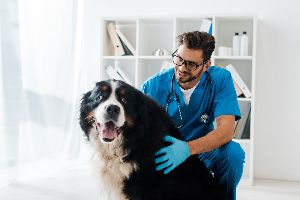
If you notice your pup’s paw pads or nose looking extra dry and crusty, you might be dealing with canine hyperkeratosis. This condition can cause your dog pain and affect their sense of smell when left untreated, making it imperative to consult a veterinarian when this problem becomes severe. Here’s why hyperkeratosis happens and what you can do about it.
What Is Canine Hyperkeratosis?
This skin condition results from excessive keratin production. Keratin is naturally found in hair, skin, and nails, but too much of it can lead to the development of hard, crusty skin. It is sometimes referred to as hairy feet hyperkeratosis because the growth can resemble rough strands of fur sprouting from the paw pads. Dried, calloused skin that forms on the snout or nose is called nasal hyperkeratosis.
Golden retrievers, Labradors, Iris terriers, Bedlington terriers, boxers, English bulldogs, and Dogues de Bordeaux are prone to developing hyperkeratosis. However, genetics is not always to blame for the condition. A veterinarian will check for other underlying causes, such as zinc responsive dermatosis or improper zinc absorption, age-related diseases, canine distemper, autoimmune skin diseases, and parasites. The earlier you detect canine hyperkeratosis, the easier it is to manage.
Why Is Hyperkeratosis Bad for a Dog?

Paw pad hyperkeratosis growth can make it uncomfortable or difficult for dogs to walk or stand. Overgrowth on the nose can cause discomfort and breathing difficulties.
While the condition isn't life-threatening, dried-out skin can become cracked without proper treatment. As a result, secondary infections or ulcers can arise and further compromise your dog's health. If you spot unusual hairs or crusty layers on your pup's body, visit a veterinarian immediately.
How Is Hyperkeratosis Treated?
Experts have yet to find a cure for hyperkeratosis. Despite this, there are still several ways to manage the condition and make your furry friend more comfortable.
A vet may recommend the removal of the hardened skin after softening it. The process is fairly simple, and you can either have it done at the clinic or ask the vet to teach you. Trimming the excess keratin can prevent cracked skin and make it easier for your four-legged friend to walk, run, and play without pain.
If hyperkeratosis is a recurring issue, a vet may recommend medications or supplements to boost healthy zinc absorption. A specially designed ointment, balm, or moisturizer can combat dryness to promote skin healing. Always consult your veterinarian before attempting any procedure or treatment.
O'Fallon Veterinary Medical Center in St. Charles County, MO, understands how heartbreaking it is to see your dog uncomfortable or in pain. Their compassionate team takes time to explain your pet's condition and recommend the best treatment options. They also provide high-quality veterinary services, including pet vaccinations, spaying and neutering services, and orthopedic surgery. Call (636) 272-3100 or visit their website to schedule an appointment with a skilled veterinarian.
About the Business
Have a question? Ask the experts!
Send your question

